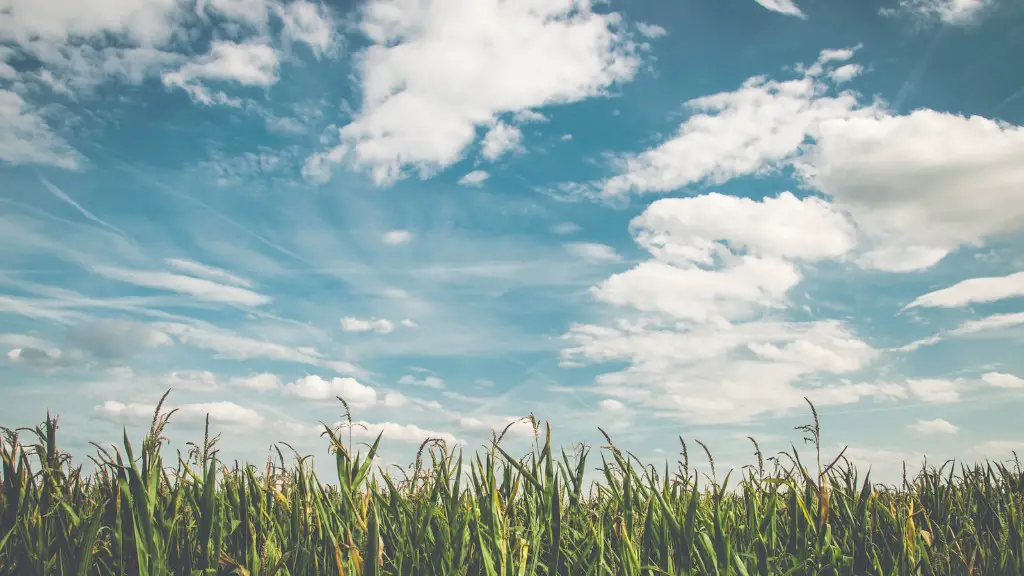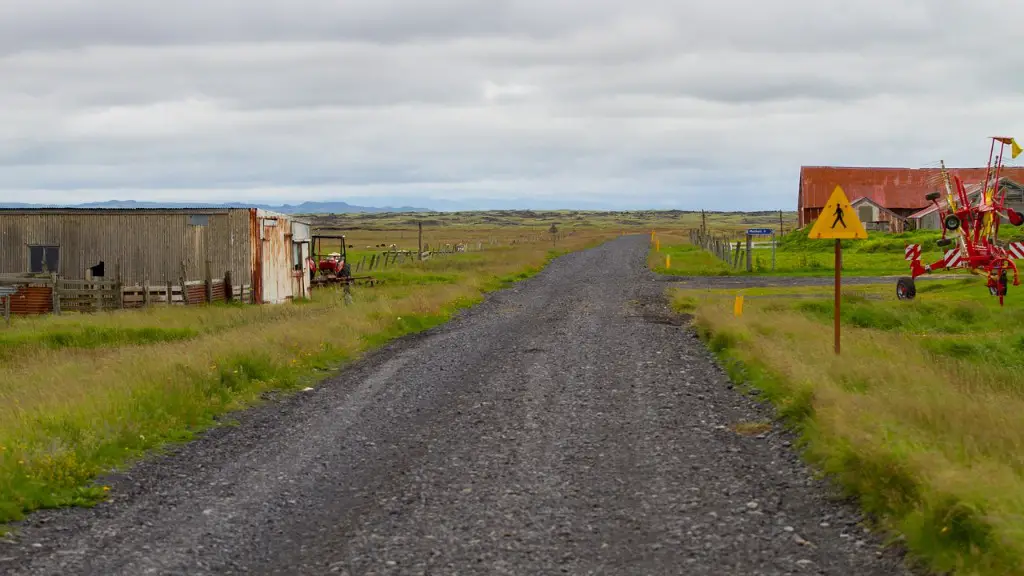The Chesapeake region was home to some of the earliest English colonies in North America. These colonies were founded in the 1600s, and tobacco was one of the staples of their economy. Tobacco agriculture had a profound impact on the evolution of Chesapeake societies.
Tobacco was not only an important economic commodity, but it also shaped the social and cultural development of the Chesapeake region. The tobacco trade was a major source of income for the colonies, and it also had political implications. Thedemand for tobacco helped spur the growth of the Chesapeake colonies, and the production of tobacco required a large labor force. This led to the importation of hundreds of thousands of African slaves to the Chesapeake region.
The Chesapeake societies were also shaped by the nature of tobacco agriculture. Tobacco was a labor-intensive crop, and it required clearing large tracts of land. This had a significant impact on the environment, and it also changed the social structure of Chesapeake societies.
The cultivation of tobacco played a significant role in the shaping of Chesapeake societies. The tobacco plant was native to the Americas and was first introduced to the Chesapeake region by European settlers in the early 1600s. Tobacco quickly became a lucrative crop, and its cultivation spread throughout the Chesapeake. The growing of tobacco required large tracts of land, and the Chesapeake’s fertile soils and mild climate were well suited for its cultivation. Tobacco plantations became the dominant form of land use in the region, and the social and economic structure of Chesapeake societies came to be largely defined by the tobacco trade. Chesapeake planters became wealthy through the sale of tobacco, and the region’s economy came to be heavily dependent on the crop. The rise of the tobacco trade also had a major impact on the social structure of Chesapeake societies. slavery became an integral part of the Chesapeake’s tobacco economy, and the region’s slave population grew rapidly in the 1600s and 1700s. The growth of the tobacco trade and the spread of slavery had a profound impact on the development of Chesapeake societies.
How did tobacco agriculture transform the Chesapeake societies?
The Chesapeake colonies became increasingly dependent on tobacco as a cash crop in the seventeenth century. This had a number of impacts on the region, including the development of the plantation system and the dependence on African slavery. Tobacco shaped the Chesapeake region in a number of ways and was a key factor in its development.
The economic depression that hit the Chesapeake region in the 1600s and early 1700s was caused by fluctuations in tobacco prices. This had a negative impact on the local Indians, who were often blamed for the colonists’ problems.
How did tobacco transform the Chesapeake region regarding labor
Tobacco was the primary cash crop in the region and it required vast quantities of land and careful tending. The growth of tobacco affected the labor market, as well, as the system of indentured servitude was replaced by that of enslaved African labor.
The cultivation of tobacco was an extreme process that required rigorous labor. Due to a lack in land and the rise and fall in cost of tobacco, this caused the number of indentured servants to greatly decline and their labor contracts to rise, making the Chesapeake farmers to look elsewhere for cheap labor.
How did tobacco farming shape the Chesapeake settlement quizlet?
Tobacco cultivation was very important to the English colonization of the Chesapeake. It was their main source of income and it put Virginia on the map as a cash-crop colony. However, the laws regarding who the Virginians could sell their tobacco to led to grievances with the British.
The Chesapeake colonies were drawn into the greater Atlantic world through the tobacco economy. Tobacco became increasingly popular in the colonies, and they wanted to be imported. This caused the colonies to be integrated into the greater Atlantic trade, which caused an increase in slavery.
What was the result of the cultivation of tobacco in Virginia?
The tobacco industry was vital to the economy of Virginia in the eighteenth century. Tobacco was the colony’s chief export and it made Virginia prosperous. By the time of the American Revolution, Virginia was the richest and most populous of the thirteen colonies, making them a key player in Colonial and early American politics.
The demand for tobacco eventually became so great, that the colonists turned to enslaved Africans as a cheap source of labor for their plantations. The legacy of tobacco and the tragedy of slavery are forever entwined in Virginia’s history. Tobacco was responsible for the development of the Virginia colony, and it was also responsible for the development of the slave trade in America. The first enslaved Africans were brought to Virginia in 1619, and by the time the American Revolution began in 1776, there were over half a million slaves in the colonies. The majority of these slaves were brought to the colonies to work on tobacco plantations. Tobacco was a key part of the Virginia economy, and it was also a key part of the slave trade.
Did tobacco help stabilize the economy in the Chesapeake region
Tobacco was a cash crop that was in high demand in the Chesapeake region. It helped to stabilize the economy by providing a steady income for farmers. Tobacco also created jobs in other industries, such as shipping and manufacturing.
Rolfe’s import of tobacco seeds from the West Indies and cultivation of the plant in the Jamestown colony led to the growth of a huge economic empire. By 1630, over a million and a half pounds of tobacco were being exported from Jamestown every year. This tobacco cultivation and export was largely in response to consumer demand, showing that Rolfe was attuned to the needs of the market. This helped to make him a very successful businessman, and the colony of Jamestown became a key player in the tobacco market.
What effect did tobacco have on slavery in Virginia?
Tobacco profits in the 17th and 18th centuries were used to buy indentured servants and slaves from England and other parts of Europe. These servants and slaves were then put to work on the tobacco plantations in the Americas. With relatively cheap labor, increasing demand for tobacco, and a system of regulation in place, the colonial plantation system was born. This system would eventually lead to the growth of the American economy and the rise of the United States as a world power.
Tobacco cultivation had a number of important effects in the region where it was first introduced. Perhaps most importantly, it led to the rapid expansion of settled areas. Previously, many areas had been only sparsely populated or completely uninhabited. However, the demand for tobacco soon led to an influx of settlers, leading to the establishment of new settlements and the growth of existing ones. Tobacco also had a significant economic impact, as it became one of the most valuable crops in the region. Lastly, tobacco had a number of social and cultural effects, as it became a popular pastime and was often used in religious and ceremonial events.
How did the growth of tobacco impact the culture
The 17th century was a time of great change in the labor force in the British colonies. The decrease in the practice of indentured servitude after 1676 CE, and the intense labor required for tobacco crops, led to the increase in importing African slaves and enslaving Native Americans. This change had a profound impact on the demographics of the colonies and the economy.
In the 1600s, the demand for tobacco steadily increased while the indentured servant work force dwindled. Tobacco plantations and farmers faced a continually shrinking labor force, and enslaved people from Africa were brought over to fill that demand. This caused a rise in plantation slavery, which had a large impact on the development of the United States.
How did tobacco affect the colonies?
Tobacco was a key commodity in the American colonies and was often taken in payment by London merchants when farmers could not pay their debt. These new laws, coupled with others such as the Navigation Act and Quartering Act, increased tensions between the colonies and Great Britain and led to the outbreak of the rebellion which became the American War of Independence.
Tobacco was so important in the early days of Jamestown that it was used as currency. This led to the importation of African slaves in 1619 to work on tobacco plantations. indentured servants also worked in the tobacco industry.
When was tobacco introduced in the Chesapeake
The Chesapeake’s native tobacco was nicotiana rustica, which was too bitter and unpalatable for commercial success. During the 1609 Bermuda shipwreck, though, John Rolfe had encountered the sweeter West Indian nicotiana tabaccum and in 1612 introduced a Trinidadian strand of it to Virginia. This new tobacco was a hit, and the Chesapeake’s tobacco industry was born.
Tobacco was a key driver of territorial expansion in the Chesapeake area. The need for large tracts of farmland to grow tobacco led to the acquisition of new land, which in turn led to increased territorial expansion. Tobacco was also a key economic driver in the region, and the profits generated from tobacco production helped to finance the expansion of the Chesapeake colonies.
Final Words
The growth of tobacco agriculture had a profound impact on the evolution of Chesapeake societies. The most evident effect was the rapid increase in the Chesapeake’s population. In 1600, there were an estimated 13,000 English settlers in the Chesapeake region. By 1700, that number had exploded to over 140,000. The vast majority of these new arrivals came to the Chesapeake in search of opportunity in the tobacco trade.
The influx of so many new people had a profound impact on the social and political landscape of the Chesapeake. The region’s burgeoning population created a demand for new and improved methods of tobacco production. This led to the development of large plantations and the creation of a class of wealthy landowners. At the same time, the growth of the tobacco industry created a new class of poor, landless workers. This social inequality would have far-reaching consequences for the Chesapeake region.
The tobacco trade also had a major impact on the economy of the Chesapeake region. The development of large plantations led to the need for a new system of labor. This resulted in the importation of large numbers of African slaves to work on the tobacco farms. The slave trade would have a profound impact on the demographics of the Chesapeake region.
In
Tobacco agriculture had a profound impact on the evolution of Chesapeake societies. It led to the rise of large plantations and the growth of a slave economy. Tobacco also had a major impact on the environment, causing deforestation and soil erosion.





